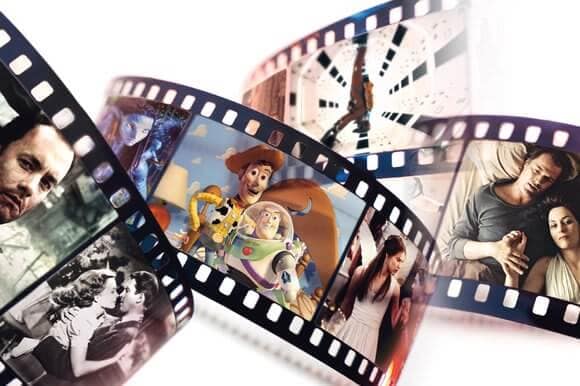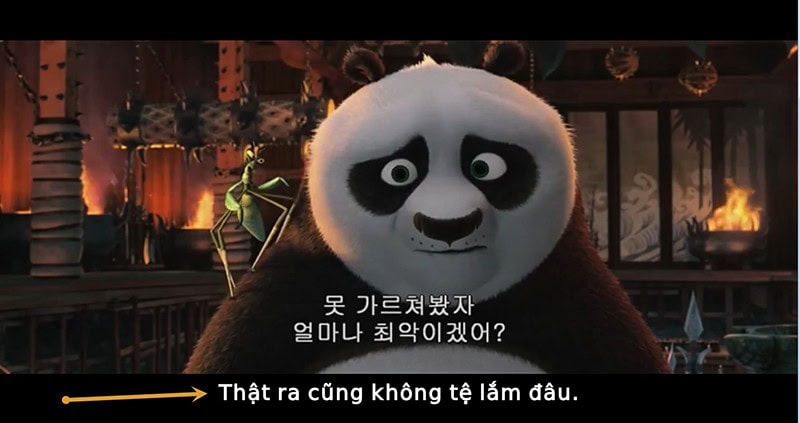Movies are loved by many audiences around the world. For many films produced by English-speaking countries and distributed worldwide, translation is required. Film production is big business and several cities and countries claim to be cinema capitals. Aside from Los Angeles where Hollywood is located, New York is a cheaper option. Canada and London are also worthy alternatives besides India.
English is a common language, but to reach a wider audience, films should use languages spoken in the target territories. This is something that film producers and distributors take seriously in preparation for the release of their films to a global audience.

Note: Film; Video Clip; Subtitle; Voiceover Translation
Globalization of Movie Content
Filmmakers and TV show producers look for more effective methods to globalize their audiovisual content. Foreign moviegoers can enjoy movies from different countries with the help of movie translation, so movies will be available in different languages without incurring huge costs. It is almost impossible to produce a movie in other languages to meet the needs of different audiences. Producing a movie in one language costs millions of dollars, so just thinking about producing a movie in different languages for distribution to other territories is unnecessary.
Movie Translation Service
Setting budget constraints on film production, it is recommended that you have movies in different languages through audiovisual translation. This is done by language service providers (LSPs) with the expertise and training to provide film translation services. Various tactics are involved in film translations, including subtitles, dubbing or lip-syncing being the most common methods. Choosing the right method is very important. Making the right choice also involves various factors such as politics, economy, and culture.
Movie Video Clips Translation Subtitles
Dubbing is another term for subtitles. Usually using subtitles is the preferred method for smaller territories. Some of the countries that prefer to watch subtitles are Sweden, Portugal, Luxembourg, Greece, Finland, Denmark, and Belgium. These countries are considered small, with populations not exceeding 12 million. This method is more cost-effective for producers, as it costs less than other film translation methods.
Subtitles are also used for foreign TV shows. This method is very popular in these countries because many local audiences can understand the original language of the movie or TV show they are watching. Another thing that makes movie subtitles popular in these territories is that several languages are officially recognized.

Note: How Foreign Film Translation Affects Global Society
Benefits When Movies Have Professional Subtitles
For most movie and TV show producers using subtitles is the choice for film translation for the following reasons:
- Relatively low cost. At some point, subtitles are about 15 times cheaper than dubbing.
- Subtitles provide authenticity to the movie. This is because viewers can still hear the dialogue in the original language and understand what is being said through the subtitles that appear on the screen in their own language. Furthermore, subtitles help viewers follow the plot of the movie in their native language and still hear the original audio without any changes.
- The plot delivery of the film is better. When subtitles appear almost simultaneously with the original dialogue, the intended meaning of the film is effectively conveyed despite the complicated dialogue. Synchronization between the actors' mouth movements and dialogue was not a priority when subtitles were placed, so the production could bring out more information.
Common Mistakes When Inserting Movie Subtitles
While subtitles are cost-effective, they also have shortcomings, so it's always a challenge to choose between subtitling and dubbing.
- Subtitles slow down viewers. Reading subtitles isn't ideal when you're watching an action or horror movie with fast-paced scenes. If you're new to subtitles, you'll understand how difficult it is to read them while time runs and the action happens on screen. If you're a slow reader, you'll be more distracted than entertained.
- Subtitles are made in limited space. Subtitles must meet strict conditions, which can only stay on screen for up to about six seconds. A subtitle line should be only 64 characters long and include spaces between words. Only two lines of subtitles are allowed. When there are dialogue-heavy scenes, some of the original message is lost due to limitations. These restrictions apply to all languages.
- Production time increased. This is because the process of adding subtitles is done after the movie has been edited and all post-production work is completed. Some subtitles are “burned” to the movie, which means they cannot be deleted. Some producers choose which subtitles to put on movies. For many manufacturers, this is a better option because annotations can be disabled.
- Overlapping colors in a particular scene are a concern in captioning. This is because text can look invisible on certain colors.
Note: Top 10 Occupations Need Interpreting Services
Movie Dubbing
Lip-lip dubbing, or simply dubbing, is another way to do movie translations. This method involves replacing the source audio with recorded audio (conversation) in another language. Spain, Italy, Germany, and France are favorite territories for dubbing. Dubbing is more common in larger countries with larger populations of around 50 million. In each of these particular countries, each language is officially recognized, so it becomes more economical to invest in dubbing a movie since nearly all viewers can understand the translated dialogue. .
However, manufacturers have to contend with other factors such as politics and censorship. In the past, some countries, like Spain, introduced censorship of foreign films because government officials did not want foreign languages to affect their citizens. The film translation method also has its benefits and shortcomings.

Note: 7 Worst Movie Subtitle Translations Ever
Benefits of Dubbing
Producers can recoup their investment in dubbing for the following reasons:
- Dubbing increases the appeal of the film to the mainstream audience. It gives a sense of comfort when viewers watch the actors speak in a language they can understand. There is an expert opinion that watching a dubbed film gives a sense of autonomy and national identity. Many viewers said that they could understand the plot better when the movie was dubbed in their native language. Other researchers argue that subtitles are more appealing to viewers who prefer to watch arthouse movies. Producers who distribute films in larger countries believe that adding subtitles is a better method of localizing movies allowing local audiences to enjoy the film more.
- Movie localization is critical to the acceptance of the target audience of dub content. Producers seek to ensure proper localization of their production, so that audiences will enjoy the setting of the film based on cultural preferences and find humor in unexpected ways. For example, when Arnold Schwarzenegger's character in Terminator 2 said, 'Hasta la vista, baby', audiences in the United States found it funny, but they also understood the now famous line, because many people were exposed. with Spanish. But in Spanish, the line is softly translated, 'See you later, baby', which doesn't give the comical effect that the original line was intended for. Thus, in the Spanish dub version, the producers injected the intended comedic flair by having the voiceover say "Sayonara, baby."
In any case, humor is difficult to translate. However, dubbing makes it easier for viewers to understand jokes because some contextual details can be made culturally appropriate for the target audience.
Common Deficiencies When Dubbing Movies
While dubbing might be a better choice for film translation, it's still somewhat flawed. Many details and aspects must be considered when using dubbing for film translation.
- Choice of voice over actors. In some cases, a person voices a particular actor in all the movies he or she plays in. Thus, the voice of the voiceover becomes familiar to the viewers and they begin to associate it with the particular actor. This is fine because it's a direct association. In Italy, however, it was previously customary to use only one voice actor for Al Pacino and Robert De Niro. But audiences were confused when two actors were cast in the same movie and the producer had to use another voice actor to voice Al Pacino. Since the audience already associated the voice with the actors, they were confused when they heard a different voice for one of the actors. This can be a big dilemma in Poland, where only one voice actor is used to provide the voices for all the characters in a movie.
- Voice synchronization of actors. Most producers are concerned with synchronizing the voice actors' voices with the mouth movements of the original actors in a movie. Often the voice of the voiceover is delayed, which can distract the audience.
Film Translation Process
Just like any translation project, the process of translating a movie is complicated and tedious. Customers may want to use subtitles or dub into multiple languages. The main considerations when translating a film are the political, economic, ideological and cultural factors of the target countries.

Note: The Best Video Subtitle Translation Tool, Clip Currently
Add subtitles
Every film translation project goes through several steps to complete. When adding subtitles, here's what the translation team does:
- Gather requirements by defining the nature and scope of the project, the language the client requires, and how you will present the subtitles. The method of exchange is defined (formal or informal). Grammatical structure is also checked.
- Create assets for translations. You need a recording of the source video and create a source caption timeframe.
- The translator translates the dialogue. The copy needs to be rebuilt into the target language. Translators must ensure that the dialogue flows smoothly while maintaining correct grammar.
- Sentences and time format adjusted. This is called the subtitle technique. In some languages, words and phrases can take longer to express than in others. Due to space and time limitations and to allow viewers time to read the subtitles, the team performed translations and adjustments at this part of the process to ensure a balance between time and maintaining intended meaning specification of the original.
- Quality assurance testing is performed. Native speakers will check the translation to make sure that the subtitles are easy to read and understand. They also check translation compliance with the source document.
- The ultimate technology. This ensures that everything works properly and prepares the subtitles in the format requested by the client. Subtitles can be prepared for display at runtime, like what you see when you watch an online video, or embedded directly into a video as applied to a DVD movie.
Film dubbing
The process of translating this movie is much easier to do. The hardest part was hiring voice actors to do it. The team handling the dub will watch the entire movie. The project manager will perform a review of the source documents and select the translator best suited for the job.
- As soon as the audio copy is finished, the movie will be adjusted or localized and timed for the recording phase. The original voiceover script was prepared and used as a guide for frame-by-frame analysis, noting pauses, general tenor voices, and intonations.
- The copy sent to the translator will have to match the voiceover script to the length of each line of dialogue in the source video.
- Localization experts use tools to count the syllables of the script to properly match the translation to the exact tempo and timing of the original file.
- Voice actors are selected while translation of the script is in progress.
- Directors and translators work with voice actors as they record translations of scripts to ensure intonation, expression, and linguistic accuracy.
- Quality control editors will check translations of dialogue to ensure accuracy and proper timing of the video and lip-syncing. Some technical adjustments can be made at this stage, such as speeding up or slowing down the video to improve lip syncing.
- Sound engineers prepare a translation of the audio track that can be mixed with the source video.
Whether you choose to dub or add subtitles to your movie, you need to make sure that the method matches the preferences of your target audience. While the overseas success of a movie or TV show depends on a number of factors, a movie translation will ensure that your target audience will definitely understand the show and the message you're trying to convey. Transmission. You can't go wrong if you cooperate with Idichthuat. Our translators, voice-overs and subtitle specialists will accurately present your script in the target languages. They will ensure that the translation is truly culturally appropriate for the target territories.
Film translation is part of a movie localization service, which means tailoring your script to the tastes and sensitivities of your local audience. Our translators and specialists are native speakers, so they fully understand the culture and nuances of the language. Furthermore, we are always available to discuss your translation requirements. Contact us today for the best movie translation!

Nguyen Trung Khang - Talented interpreter and translator, passionate about translation
Nguyen Trung Khang is a talented interpreter and translator, with many years of experience in the field of translation and linguistics. He graduated from Ho Chi Minh City University of Education, majoring in Linguistics in 2015.
After graduating, Mr. Khang participated in a professional interpretation and interpretation training course at the University of Foreign Languages - Hanoi National University. He achieved a high-level certificate in interpreting and interpreting, and was also awarded a master's degree in linguistics.
